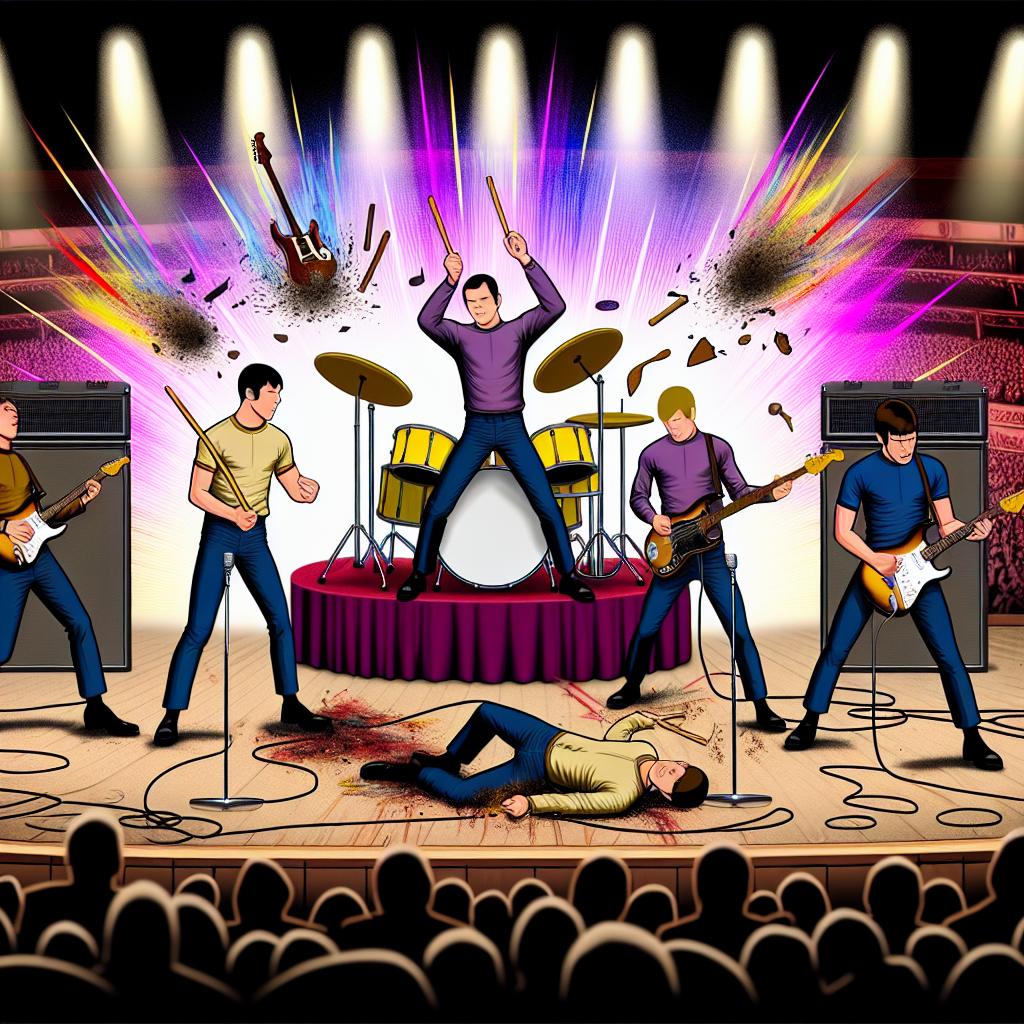The Reason Behind The Who’s Instrument Destruction
The Who’s dramatic act of smashing their instruments on stage stands as one of the most iconic moments in rock history. While at first glance this may seem like a chaotic, spontaneous stunt, it was, in reality, a calculated and deliberate gesture serving multiple purposes for the band. To fully comprehend the reasons behind this dramatic act, it’s essential to delve into the cultural context of the era and the individual motivations of The Who’s members.
The Influence of Art and Culture
The 1960s were a time of profound transformation in both art and music. The Who’s practice of destroying their instruments can be partially understood as an extension of the era’s fascination with the concept of destruction as a vehicle for creation. This notion drew influences from the art movement referred to as Destruction in Art, which included artists who employed destructive methods as a medium for expression and social commentary.
The movement challenged traditional perceptions of art, redefining it as a process involving both the act of creation and annihilation. This was not just a display of recklessness but a reflective cultural commentary on the times. By aligning with this movement, The Who’s performances became more than music—they were statements on the changing cultural landscape.
Feedback from the Audience
An insightful interview with Pete Townshend, the band’s guitarist, sheds light on the reciprocal dynamic between the band and their audience regarding instrument destruction. Townshend articulated that the destruction of instruments elicited not only an outburst of energy from the band but also from the audience, engendering a shared, almost primitive emotional experience. The visceral reaction prompted the audience to engage deeply with the performance, turning concerts into mutual expressions of energy and emotion.
This response could be seen as a metaphorical breaking down of barriers between performer and observer, fostering a connected, collective experience. In this light, The Who’s destructive acts were not purely chaotic exhibitions but were strategic enhancements to the live music experience, designed to evoke tangible emotional responses.
The Role of Pete Townshend
Pete Townshend’s name is frequently associated with popularizing the act of instrument destruction during live music performances. Townshend revealed that the act initially happened by chance during a performance where his guitar suffered damage. The audience’s unexpected captivation led Townshend to integrate these moments deliberately into subsequent performances as forms of spontaneous art.
Expression of Frustration
For Townshend, instrument destruction was not merely theatrical showmanship. It was an artistic channel for releasing bottled-up frustration and dissent. By harnessing this destructive act, Townshend aimed to project feelings of rebellion and unease against societal conventions, aligning closely with the countercultural ethos prevalent in the 1960s. The band’s public displays of breaking instruments symbolized their challenge against established norms and a rejection of conformity.
This destruction was emblematic of more than rebellion; it illustrated a deeper discomfort with the status quo and an urge to break free from societal constraints. The visual and auditory spectacle of ruined guitars and drums served as a metaphor for destruction of the old and birth of the new, reflecting the sentiments of a generation seeking change.
A Business Strategy
Beyond the artistic nuances, the destruction of instruments had distinct commercial advantages. The music industry of the time was fiercely competitive, and this sensational act differentiated The Who from other bands. The notorious reputation for instrument destruction ensured their concerts were unforgettable, drawing significant media attention and enhancing their public image, ultimately broadening their fan base.
As a marketing tool, the act elevated The Who above their contemporaries, building a brand of unpredictability and raw energy that intrigued audiences and critics alike. While financially burdensome due to the loss of expensive instruments, the symbolic value and extraordinary publicity it generated often outweighed the costs.
Impact on the Music Industry
The influence The Who exerted through their approach resonated with many musicians and bands that followed. Instrument destruction became synonymous with rebellion and the quintessential exuberance of rock and roll. Despite the possible financial burdens of consistently destroying instruments, the symbolic validation and broad publicity the act offered frequently justified the expense.
The Who’s branding of destruction as performance art paved a path for subsequent bands to explore and incorporate similar antics into their acts. This legacy continued to inspire musicians to push boundaries, fostering an enduring impact on music and culture.
Further Reading
For those intrigued by the phenomenon of instrument destruction in rock music and its wider cultural implications, there are additional resources worth exploring. Music history archives and museum exhibitions focusing on 1960s music culture offer deep insights. Moreover, interviews with The Who’s members provide a more in-depth understanding of their motivations and the impact they had on rock music as a generational voice.
